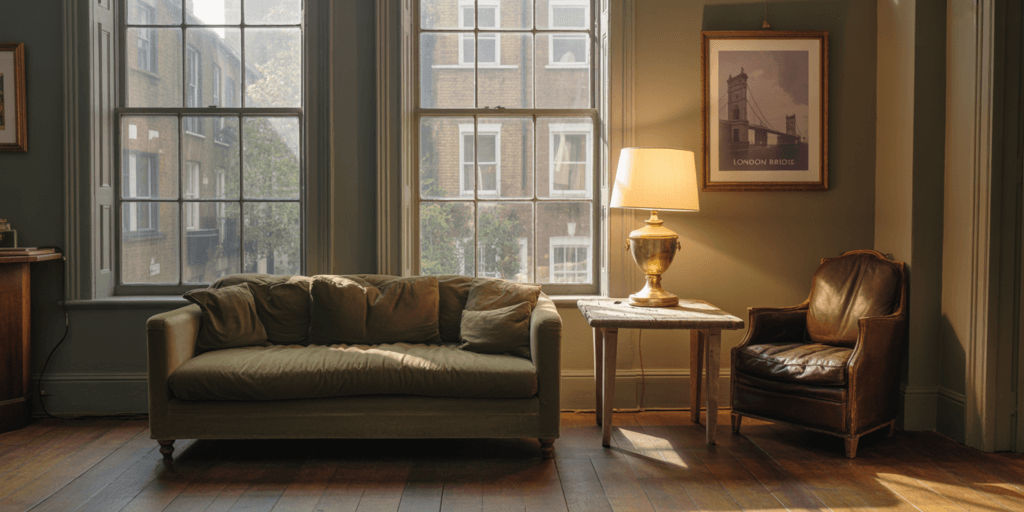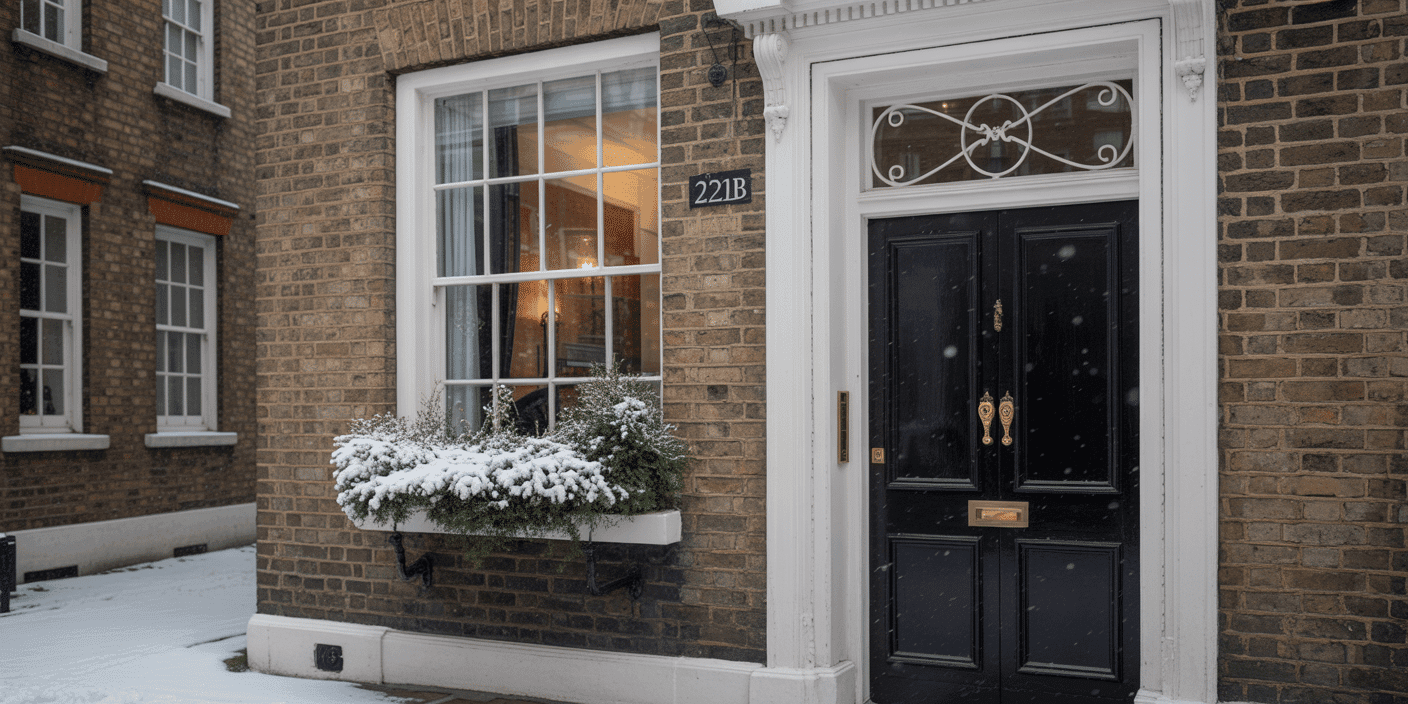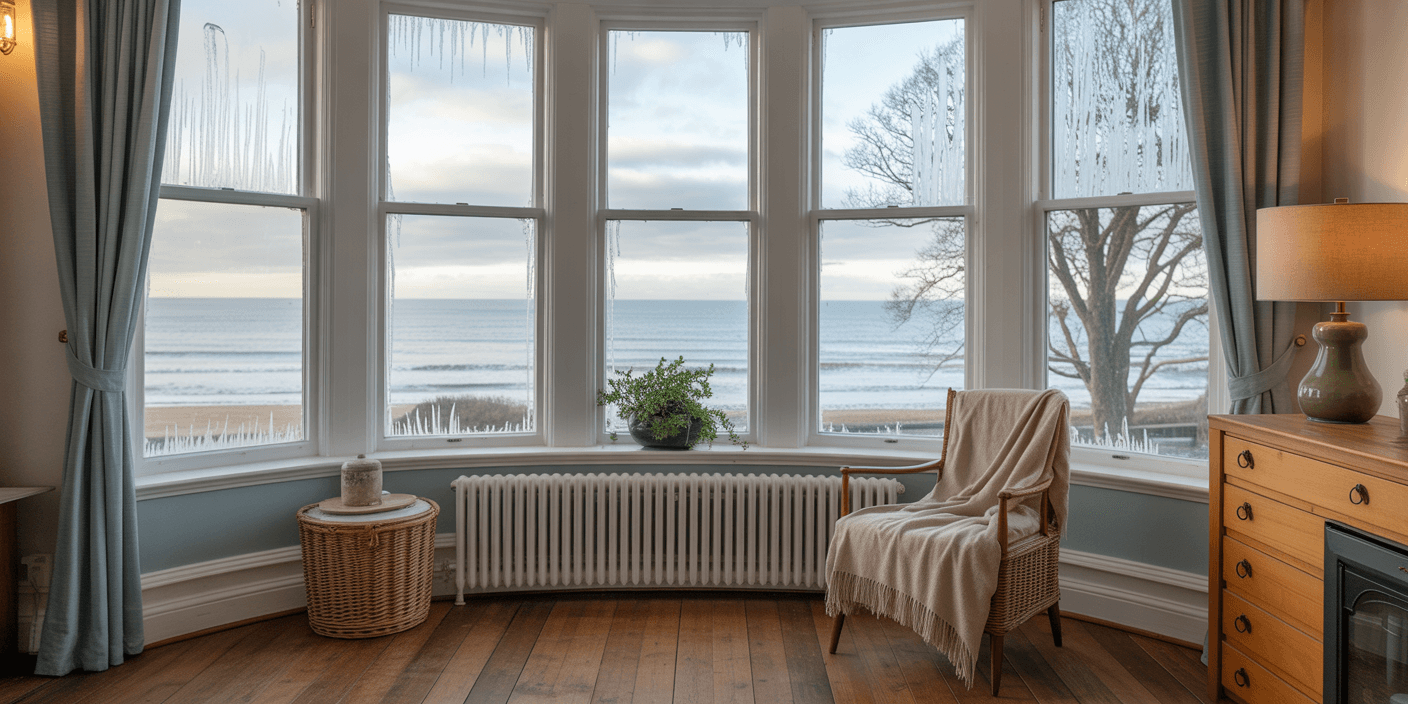Your Windows May Be Beautiful — But Will They Be Legal in 2025?
Aesthetic merit no longer guarantees compliance.
From Georgian townhouses to Edwardian villas, the timeless charm of traditional sash and casement windows now faces a modern challenge: regulatory enforcement driven by performance, not appearance.
As of 2025, changes to the UK Building Regulations — particularly Part L (thermal efficiency), Part Q (security), and Part K (safety) — will redefine what is considered acceptable across both new builds and heritage refurbishments.
The government’s Future Homes Standard is accelerating the nation’s journey toward net zero. As a result, windows must now function as integral thermal barriers, not just decorative architectural elements.
Frames will be scrutinised. Performance must be proven. Aesthetics alone will not suffice.
Most traditional window systems — even those retrofitted with double glazing — are unlikely to meet the new U-value thresholds and compliance metrics. Their shortfall is not always visible, but the consequences will be:
- Planning refusals
- Delays to renovation or sale
- Voided warranties
- Escalating energy costs
This isn’t a cosmetic upgrade. It’s a regulatory imperative.
And for homeowners seeking to preserve architectural heritage without compromising legal or thermal integrity, one solution has emerged at the forefront of window design innovation:
The thermally broken window.
Sash Windows London has led this evolution — developing systems that reconcile heritage authenticity with cutting-edge thermal performance, ensuring full compliance while preserving the soul of the building.
The Real Threat: What You Don’t See in Your Window Frames
When people think of energy-efficient windows, they almost always picture the glass — double-glazed, low-E coatings, argon gas, triple-glazed if they’re serious.
But glass is only part of the equation.
The real threat to your energy bills?
The window frame itself.
Most traditional window frames — timber, aluminium, or even uPVC — are highly conductive. That means they act like tiny radiators, quietly siphoning heat from your home and leaking it outside, even when the windows are tightly shut.
In technical terms, it’s called thermal bridging.
In human terms, it’s like putting your central heating on… and then wrapping your window frames in ice.
And because this happens at the edge — where frame meets glass, where sash meets sill — you don’t see it, and you don’t feel it directly. But your energy bills do.
The irony? Even beautifully restored sash windows, lovingly reglazed and repainted, can fail the new 2025 standards — not because of the glass, but because the frame lacks a thermal break.
What is a thermal break?
A thermal break is a hidden layer of insulation built inside the window frame — a deliberate barrier between the inner and outer materials.
It interrupts the transfer of heat through the most vulnerable part of the window: the frame.
It’s usually made from a high-performance, non-conductive material like polyurethane or structural foam.
It’s not visible from the outside. It doesn’t change the look of the frame.
But it transforms its performance.
With a thermal break in place:
- Heat stays inside
- Condensation risk drops
- Frame U-values plummet (a very good thing)
In some high-end systems — like the thermally broken timber-aluminium hybrids crafted by specialists like Sash Windows London — this technology is paired with heritage detailing that preserves period charm, while quietly meeting or exceeding Part L standards.
The point is simple:
If your window frames aren’t thermally broken, they’re thermally broken — as in, broken for your comfort, broken for compliance, and broken for your energy budget.
And in 2025, ignorance won’t just be expensive.
It could make your home unfit for sale, renovation, or planning approval.
Thermal breaks aren’t a luxury anymore. They’re a line of defence.
Part L, Part Q, Part K — Decoding the 2025 Reg Changes

If you’re a UK homeowner, 2025 isn’t just another year on the calendar. It’s the deadline for the next major leap in building regulation compliance, and windows are at the heart of it.
For period homes, extensions, refurbs, and even new builds — especially those involving sash windows or casement styles — three parts of the Building Regulations matter most:
Part L — Conservation of Fuel and Power
This is the thermal performance standard. It governs how much heat your home is allowed to lose through walls, roofs, floors, and windows.
In short:
If your windows don’t meet the new U-value thresholds, your home fails.
What’s changing in 2025?
- Window U-values must now reach ≤ 1.4 W/m²·K (lower = better insulation)
- Planning officers will now require evidence of compliance — not just a promise
- Even heritage-style windows must meet these targets, unless formally exempted
Why this matters:
Most older windows — and even many new ones without thermal breaks — hover around 1.7 to 2.0 W/m²·K.
They look lovely. But they’ll fail.
Thermally broken window systems (especially timber-aluminium hybrids) have been engineered to meet these new targets without changing the traditional aesthetic. That means passing regs — without failing your home’s soul.
Part Q — Security in Dwellings
This one’s about protection against intruders.
It requires all accessible doors and windows to meet PAS24 security standards.
What does this mean in practice?
- Laminated safety glass or security-rated double glazing
- Multi-point locking systems
- Frame reinforcements (often concealed)
Many older sash window designs don’t include these features. But retrofitting them poorly risks damaging the aesthetic — or getting you flagged by building control.
Properly engineered thermally broken windows can be designed to integrate high-security features invisibly, meeting Part Q and satisfying conservation officers.
Part K — Protection from Falling, Collision and Impact
This governs safety glass, sash restrictors, and opening limitations — especially on upper floors or areas accessible to children.
For example:
- Sash stops are now mandatory in certain first-floor bedrooms
- Safety glazing is required below 800mm from the floor level
Aesthetic sash designs must now include:
- Opening restrictors (that meet escape standards, too)
- Glazing compliant with EN 12600 or BS 6206
Many off-the-shelf sash replicas don’t meet these rules — they look right but perform wrong.
Sash Windows London, and a few like them, build Part K-compliant systems into every heritage window, seamlessly.
Why This Matters
These aren’t optional. They’re law.
And in 2025, enforcement will tighten — especially for:
- Planning submissions
- Building control inspections
- Mortgage valuations
- Insurance assessments
Failure to comply means:
- Delays
- Rejected planning
- Extra costs
- Retrofitting at premium prices
And the tragedy? Many homeowners will fail because of their window frames.
✅ With thermally broken sash windows engineered for Part L, Q, and K, you don’t just keep the heat in — you keep the regulators out.
Thermally Broken Windows Explained (So a Homeowner Can Actually Understand It)
You’ve heard the term.
Maybe it sounds like something from a sci-fi film, or a broken pane of glass. But thermally broken windows are neither broken nor complex — and in 2025, they might be the only thing standing between your home and non-compliance.
Let’s strip out the jargon.
What is a “thermal break”?
In the simplest terms:
A thermal break is an invisible, insulated layer built inside the window frame that stops heat from escaping your home.
Older window frames — especially timber and aluminium — are thermal bridges. They conduct heat straight through the material, like a metal spoon left in a hot cup of tea.
That means even if your glazing is high-spec double or triple-glazed, the frame itself could be leaking warmth — costing you hundreds each year in energy bills and potentially failing Part L.
A thermally broken window interrupts that heat transfer. Inside the frame is a layer of non-conductive material — often a high-density polymer, foam, or resin bridge — sandwiched between the inner and outer surfaces.
It’s not visible. It doesn’t change the look.
But it transforms performance.
Why it matters more than ever in 2025
Part L is pushing U-values (the measure of heat loss) lower. To comply:
- Glass and frame must be considered as one system
- A beautiful window that loses too much heat at the edges will fail inspection
With a thermal break:
- U-values drop (good)
- Cold spots disappear
- Condensation risk reduces
- Energy bills shrink
- Planning passes faster
And with the right window company — like Sash Windows London — it’s done without compromising style or heritage detail.
Not All Thermal Breaks Are Equal
There’s a world of difference between:
- Cheap “stick-on” thermal inserts (ineffective)
- Basic uPVC cavities (limited performance)
- Engineered, full-depth thermal breaks integrated into high-performance timber, aluminium or composite frames (regulation-ready)
Sash Windows London builds systems where thermal insulation is woven into the soul of the frame — not added as an afterthought.
This isn’t a cosmetic upgrade. It’s a structural innovation that:
- Keeps homes warm
- Makes planners smile
- And helps your property sail through 2025
“It’s what you don’t see in the frame that makes all the difference.”
The Cost of Doing Nothing (Energy, Compliance, Planning)
Let’s speak plainly.
Doing nothing about your windows isn’t neutral.
It’s expensive, risky, and about to get worse.
Heat Loss = Cash Burn
Most homeowners underestimate how much energy is lost through their windows — especially the frames. In period properties, traditional sash or casement windows without thermal breaks can account for up to 30% of total heat loss.
That translates to:
- £800–£1,750 per year in wasted heating, even with double glazing
- Draughts and cold zones near windows
- Higher dependency on radiators and boilers (and rising energy costs)
A thermally broken frame quietly eliminates this invisible drain — working 24/7, without anyone noticing, except when the heating bill is suddenly 30% lower.
Non-Compliance Isn’t Just a Paperwork Problem
As of 2025, Part L (thermal performance), Part Q (security), and Part K (safety) compliance will no longer be box-ticking exercises.
Failure means:
- Rejected planning permission
- Delays to builds or extensions
- Mortgage approvals held up
- Retrofitting costs that could double your spend
- Insurance or EPC certification complications
And remember — most failures won’t come from the glass.
They’ll come from substandard frames.
Heritage Homes Are at Higher Risk
If you own a period or listed property, you may assume you’re exempt. In some rare cases, concessions apply — but don’t bet your planning approval on assumptions.
Conservation officers are increasingly demanding:
- Evidence of thermal performance
- Visual fidelity + functional upgrades
- Minimum U-values without compromise to aesthetics
Without thermally broken frames, your windows might look beautiful — but not beautiful enough to satisfy a planning officer in 2025.
“I’ll Just Wait…” Might Be the Most Expensive Sentence You Say This Year
Waiting until you fail inspection, or until a quote gets rejected by building control, or until energy costs spike again — that’s not saving money. That’s delaying an inevitability.
And the closer we get to 2025:
- The longer lead times will grow
- The fewer trusted specialists will be available
- The higher demand — and prices — will climb
“Every month you wait is a month you overpay in energy and underprepare for compliance.”
Sash Windows London has seen this play out before — when Part L last changed in 2022, and again when planning officers began demanding performance data alongside drawings.
Their approach?
Get ahead. Educate clients. Build windows that don’t just look compliant — they are compliant.
The Good News — Performance Without Compromise

Let’s be clear: this isn’t a doom-and-gloom story.
Yes, regulations are tightening.
Yes, most traditional windows won’t make the cut.
But here’s the good news:
You no longer have to choose between beautiful and compliant.
Thanks to advances in frame engineering and joinery design, it’s now possible to have elegant, heritage-style windows that not only pass 2025 regulations — they exceed them.
Period Charm Outside, Cutting-Edge Performance Within
Modern thermally broken windows — when done properly — preserve every visual cue of traditional sash or casement windows:
- Slim, authentic sightlines
- Period-correct horn detailing
- Timber, timber-alternative, or alu-clad finishes
- Putty-line glazing or heritage bars
But behind the scenes?
- Precision-fitted thermal breaks
- Laminated safety glass and PAS24 locks
- Sash restrictors and safety stops
- Frame U-values as low as 1.1 W/m²·K
That’s better than most modern uPVC units — and light-years ahead of unbroken timber or aluminium frames.
It’s Not Just About Passing Part L — It’s About Future-Proofing
Sash Windows London builds beyond minimums.
Why? Because what passes today might not pass next year.
- Energy prices are rising
- Net-zero targets are tightening
- Buyers are savvier
- Planning officers are asking tougher questions
With a fully compliant, thermally broken window system, you’re not just passing a test. You’re:
- Increasing your home’s efficiency
- Raising your property’s value
- Avoiding future retrofit costs
- Improving year-round comfort
- Silencing draughts, condensation, and cold zones
Security, Safety, and Style — All in One Frame
Performance is more than thermal.
The best thermally broken windows also deliver:
- Part Q security (multi-point locks, secure sash design)
- Part K safety (glass below 800mm, restrictors on upper floors)
- Planning-friendly visuals (especially for conservation zones)
That’s why Sash Windows London engineers each frame with a threefold outcome in mind:
Looks like it belongs in a Georgian townhouse
Functions like it was specced for a modern eco-home
Signs off with building control — first time
You don’t have to compromise.
Not on style. Not on warmth. Not on peace of mind.
The solution isn’t louder radiators or cheaper windows.
It’s a window frame designed to do both jobs — and do them brilliantly.
How to Choose the Right Thermally Broken Window Provider
By now, the case is clear:
If your window frames aren’t thermally broken, your home may not meet 2025 building regulations — no matter how beautiful your glass is.
But here’s the harder truth:
Not all window companies are qualified to deliver this kind of solution.
In fact, many still don’t fully understand the complexity of Part L, Part Q, or the precise engineering that goes into a genuinely compliant thermally broken frame.
The stakes are too high to gamble. This isn’t just another joinery job.
It’s a fusion of architectural heritage, building compliance, thermal science, and planning law — and few companies can walk that tightrope.
So, how do you choose wisely?
1. Do They Offer Proven U-Value Performance?
You’re not shopping for windows.
You’re shopping for verified thermal results.
Ask to see:
- Actual U-value test reports
- Evidence of frame + glazing performance (not just glass)
- Certification that meets 2025 thresholds (≤1.4 W/m²·K or better)
Sash Windows London publishes verified U-values and integrates them into planning packs — no guesswork.
2. Can They Guarantee Full Building Regs Compliance (Parts L, Q, K)?
Your provider must understand how thermal, security, and safety standards interconnect. It’s not optional.
Look for:
- PAS24 security compliance
- Safety restrictors and glazing for upper floors (Part K)
- Thermal break technology that’s engineered, not “retro-fitted”
✅ Sash Windows London builds compliance into the design, so it’s never a retrofit. It’s regulation-ready from day one.
3. Can They Respect the Architectural Character of Your Home?
Thermal compliance should never come at the cost of visual integrity.
Insist on:
- Slim sightlines
- True sash detailing (horns, meeting rails, heritage bars)
- Flush frames, putty-style glazing
- Timber or alu-clad finishes that mimic traditional profiles
Sash Windows London has delivered compliant solutions in Grade II-listed and conservation zone properties — without a single design compromise.
4. Do They Support the Planning Process?
A truly qualified provider doesn’t just deliver the window — they support the entire journey.
That means:
- Pre-submission planning advice
- Thermal modelling if needed
- Planning-friendly drawings
- Compliance documents for Building Control
Sash Windows London partners with architects, developers, and planning consultants to keep your application watertight — and your schedule on track.
5. Can They Actually Build What They Promise?
Look beyond the brochure.
Ask:
- “Where can I see your thermally broken windows in situ?”
- “Do you fabricate in-house or outsource?”
- “Can I see past projects that passed planning + compliance?”
Sash Windows London not only builds everything in-house — they also invite clients to see their work before committing.
Choosing a thermally broken window provider is not a box-tick.
It’s a decision that affects your property value, energy efficiency, planning success, and even future resale.
Make the wrong call — and you risk:
- Planning rejection
- Regulatory headaches
- An expensive refit in 18 months
Make the right call — and you future-proof your home, beautifully.
Your Next Step — Compliance Confidence Without Compromise
The message is simple:
In 2025, windows will no longer be judged just by how they look — but by how they perform.
Thermally broken frames aren’t a luxury or a trend.
They’re now the threshold between compliance and complication, between comfort and cost, between passing and planning purgatory.
And here’s what too many homeowners will discover — too late:
The windows they trusted… aren’t trusted by building control.
The company they hired… never read the regs.
The beautiful frames they invested in… leak heat and risk legal non-compliance.
You don’t have to be one of them.
What You Now Know:
- Thermally broken windows drastically reduce heat loss through the frame
- They are essential for meeting 2025 U-value targets under Part L
- The right systems can also satisfy Part Q (security) and Part K (safety) — without sacrificing style
- Heritage and conservation properties are not exempt from scrutiny
- Not all window companies understand how to deliver compliance and aesthetic integrity
- Sash Windows London has already solved this problem — hundreds of times
So here’s your move:
If you own a period property, are planning a renovation, or simply want to protect the value and efficiency of your home:
👉 Book a free thermal compliance consultation
Get personalised advice based on your plans, property type, and planning requirements — no guesswork, no obligation.
👉 Send us your drawings or photos
We’ll tell you if your current windows are likely to pass 2025 regs — and what it would take to get them there (aesthetically, affordably, efficiently).
👉 Explore our thermally broken sash systems
Designed for homeowners who want the warmth of the future, without letting go of the past.
Your home deserves more than charm. It deserves performance.
We deliver both.







